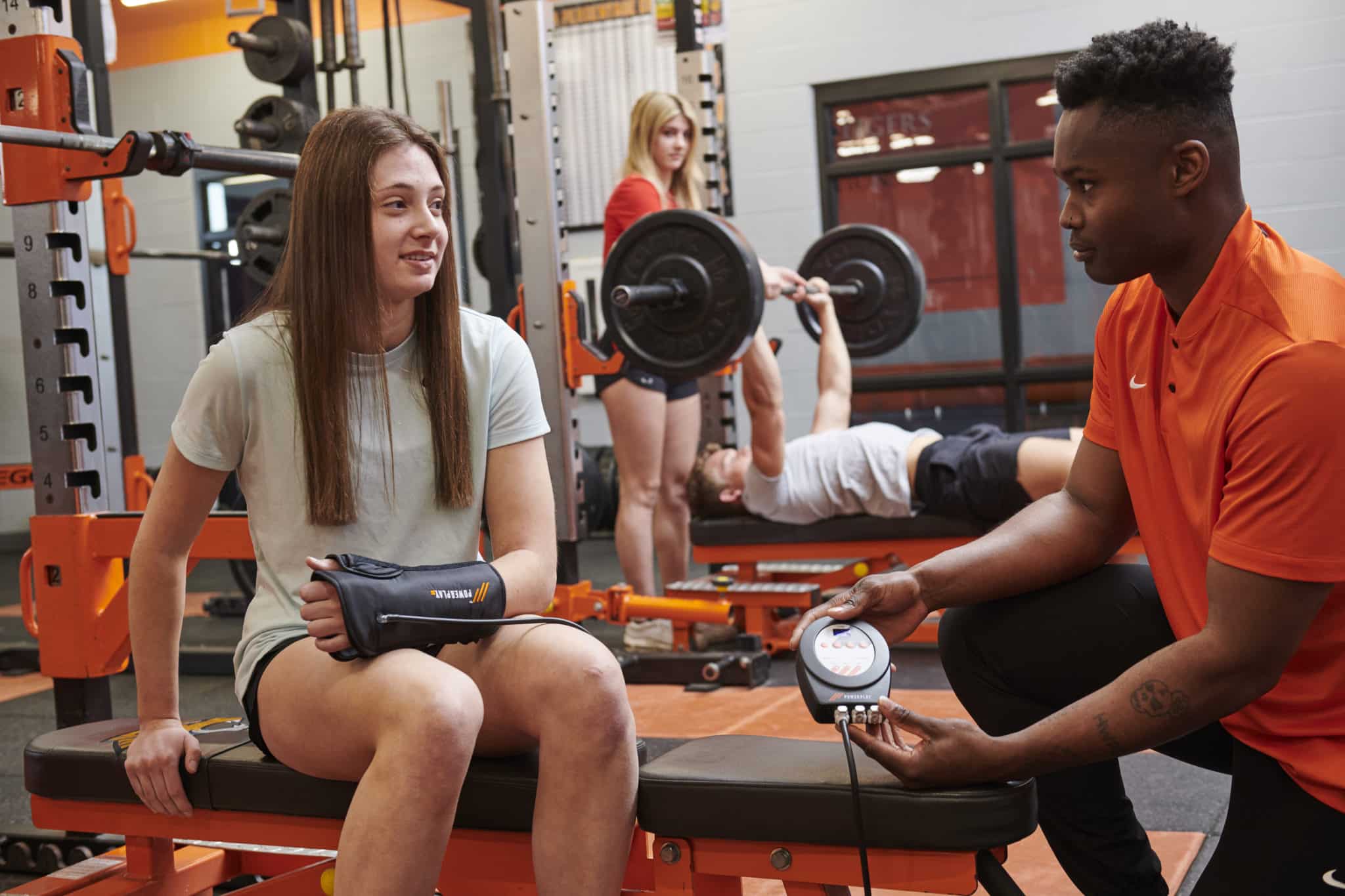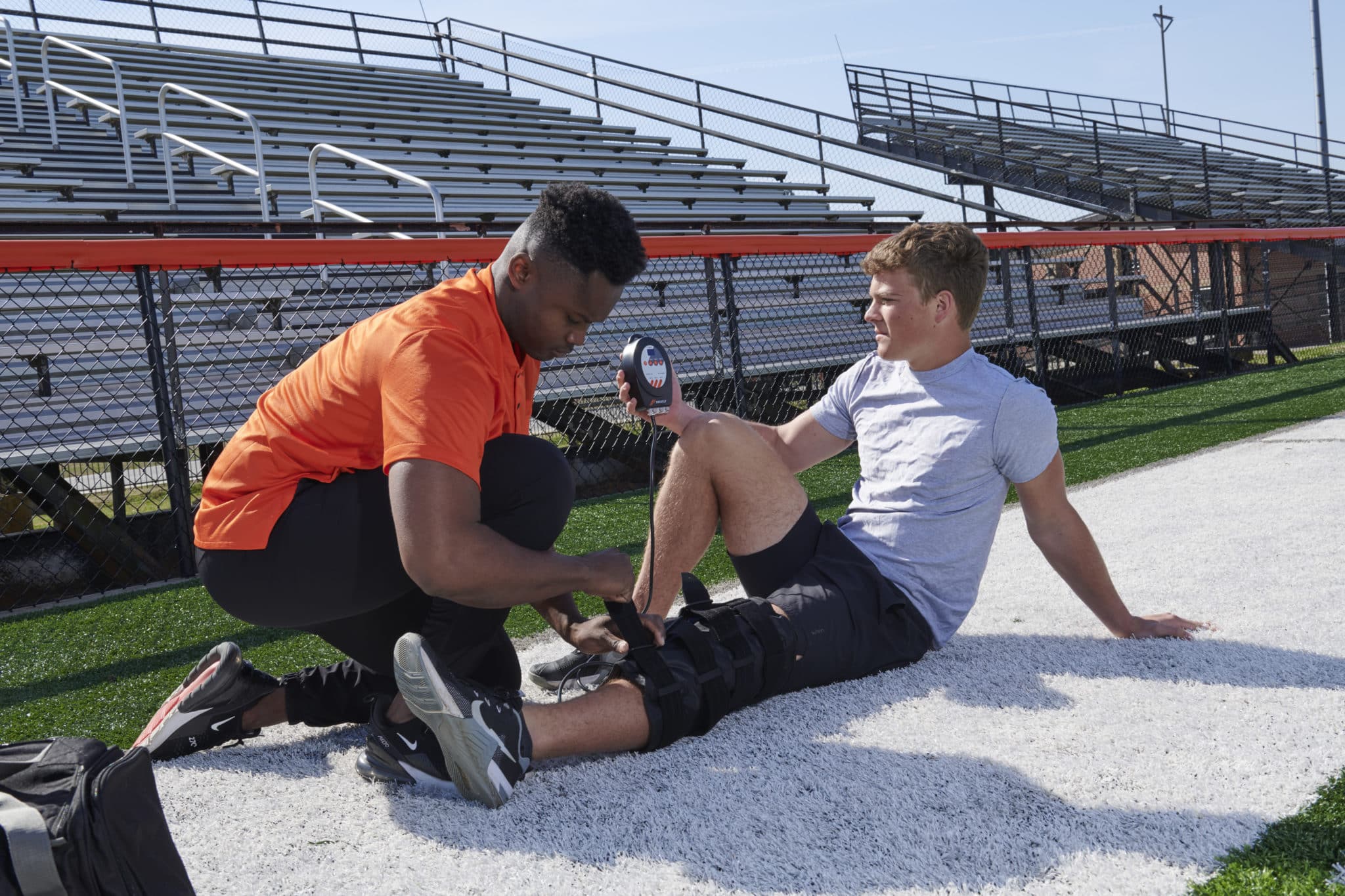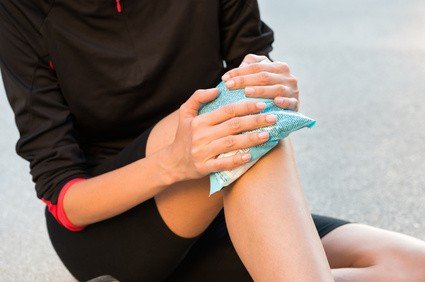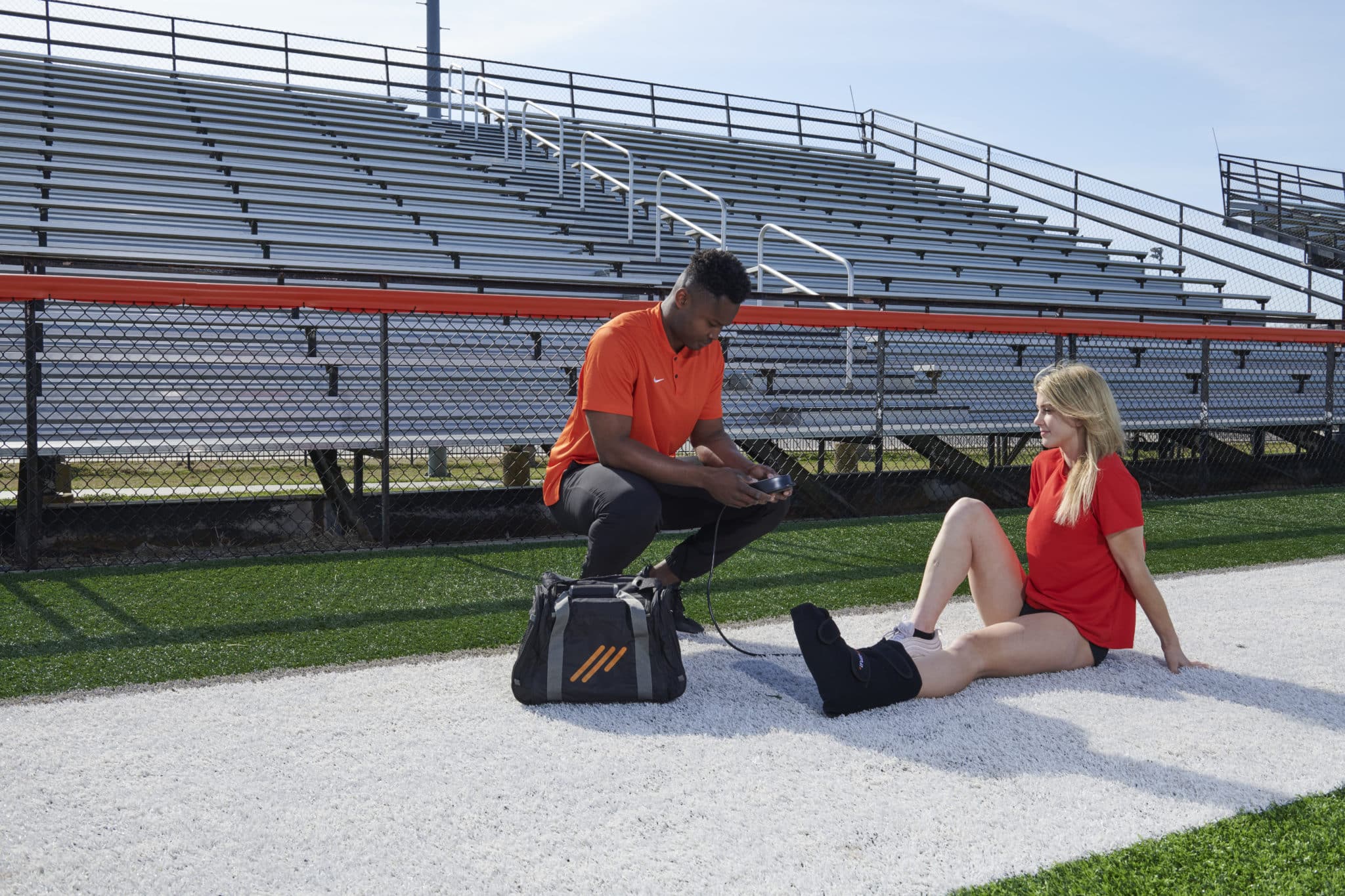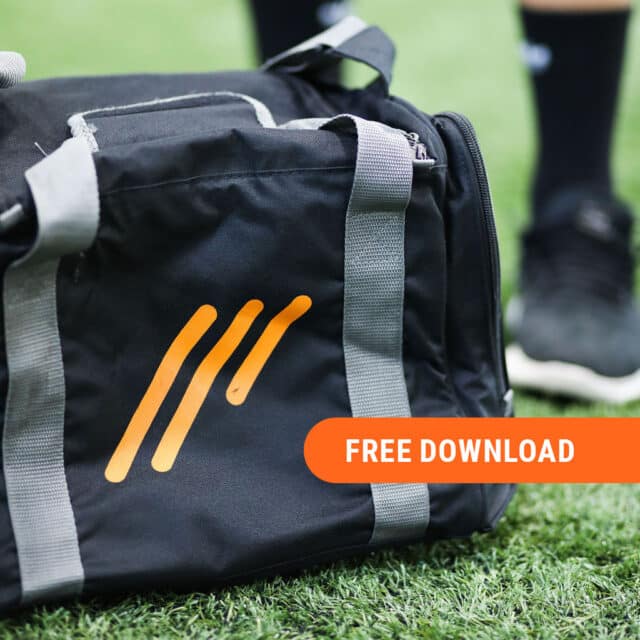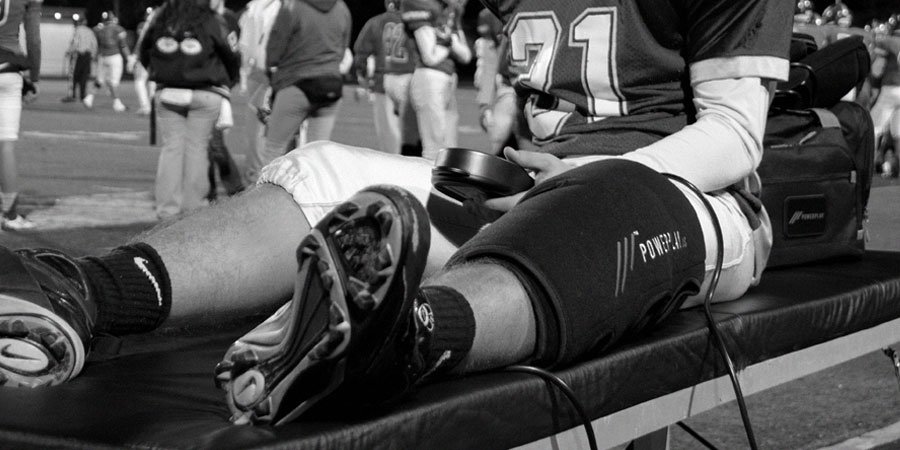
In our own way to celebrate National Athletic Training Month – which is designed to spread awareness about the important work of Athletic Trainers – we wanted to ask those professionals for insight into what they do and why they do it. We wanted to know why Athletic Trainers pursued their field. We wanted to hear about their mentors, what they thought people perceived about the profession – and what could be done to better educate the public.
To do this, we asked athletic training professionals to participate in a survey to give insight into the profession and their opinion about public impression of the industry. We were overwhelmed with the results – we loved hearing about your mentors, your reasons for pursuing this profession, and your thoughts on how to move your profession forward.
Overall, you got into Athletic Training to help others – to blend your love of athletics with your interest in the medical field. You were inspired by mentors found in neighbors, teachers and ATs you knew when you were an athlete. And, you all agree – you are treating ankle injuries and muscle strains frequently. You all think your profession is making strides with the public understanding your role, but you also think further education, social media campaigns and media exposure could help continue to improve the public’s understanding of the role of athletic trainers.
Here are some of the specific answers and advice based on real-life, real-world experiences from athletic trainers from around the country:
What made you want to go into Athletic Training?
“I was drawn to the field of athletic training because of the versatility offered by the profession, the critical thinking and problem-solving required by the position and the opportunity to develop strong interpersonal relationships in every day interactions!” – Karyn Gentile
“Going into college with various scholarships, I was told I had a career-ending injury (which I later learned was certainly not career-ending). Thus, my soccer career was cut short, and I decided to pursue a career in Sports Medicine with the promise to myself (and my athletes) that I would never let an athlete go through what I did. I swore to always provide the best prevention, care, treatment, and rehabilitation that I possibly could.” – Kayla Cullerton, Providence College
“I was a high school and college lacrosse player that was hurt numerous times. My high school and college athletic trainer worked with me to get me back to playing each time. After high school, I thought I wanted to be a physical therapist. But, after getting injured during my freshman year of college, I changed my mind and decided to pursue a career in athletic training. I realized that I wanted to do for other athletes what my athletic trainers did for me.” – Frank Zilinek
“I was a basketball manager in HS in the 9th grade (1973) and I was told to go clean and straighten the equipment room. As I was cleaning it I found a binder by Cramer called Athletic Training in the ’70s. I started looking/reading through it and I knew what I wanted to be and do as a profession.” – Anonymous
“I had a few injuries when I was in high school. I got to work with the athletic trainer that was at my school, and they got me interested in the job. I have loved sports all my life and loved helping people. This job lets me combine those two things.” – Anonymous
“I loved getting to be on the sideline at sporting events and being able to help people and make a difference.” – Lindsey Rawlins, Houston Methodist Hospital/Alvin High School
“I knew I wanted to do something in the medical field, without actually going to medical school, and have always loved sports and was at one time an athlete, then athletic training was introduced to me while in high school and I knew that was it.” – Anonymous
Do you have any mentors and/or role models that inspired you to get into Athletic Training?
“I am the professional I am today due to the amazing influence and guidance provided to me from my wonderful mentors Garry Miller (Baldwin Wallace University) and Don Lowe (formerly Syracuse University).” –Karyn Gentile
“I am lucky to have a wonderful mentor, Kathy Burl, whom was a preceptor for me while in college. To this day, she is the person I call for everything and I am so thankful for her friendship. I decided to become and athletic trainer due to the positive influence I had from my high school athletic trainers, Jason Carruth and Alta Smith.” – Anonymous
“Jeff Smith was the Hardin-Simmons University AT that took care of my injury then invited me to take the intro class where I fell in love. David Stuckey, DJ Gililland, Kelly Quinlin, Dave ‘DC’ Colton and a few others along the way continue to mentor and inspire me year to year.” – Amanda M. Andrews
“Dr. Suanne Maurer-Starks (Bridgewater) has been my mentor since grad school, and I can’t thank her enough for helping me get to where I am today. John Rock (Providence) has also continued to look out for my growth as an athletic trainer, and Brad Kimble (Syracuse) was one the ATCs that helped strengthen my love for the profession.” – Kayla Cullerton, Providence College
“My college head Athletic Trainer Tim Sensor has been my mentor and role model since I was a student Athletic Trainer through my entire professional career.” – Frank Zilinek
Do you think the general population understands what an Athletic Trainer does? If not, do you have any ideas on how to improve awareness about the profession?
“I think that there has been increased awareness over the past few years; however, there are still a significant proportion of the population that do not fully understand what athletic trainers do. In my opinion, I feel that a change in the name of the profession would certainly help. I also feel that athletic trainers should continue to educate the public and their local communities about the services that we provide. Additionally, I feel that as the profession continues to grow and expand into other areas of allied health, other professions will begin to learn more about what the profession is and what we offer.” – Anonymous
“Unfortunately, I do not think the general population understands the role of an athletic trainer, but a complex problem cannot be solved by a simple answer. So until that time, all athletic trainers need to continue to perform with confidence, skill and integrity in their positions and seize every opportunity to educate those we interact with, so the general population will consistently hear and see the role of an Athletic Trainer.” – Karyn Gentile
“I feel the general population is beginning to understand more fully what an athletic trainer does in recent years. With more college and professional sports announcers being former athletes, athletic trainers are starting to be mentioned more and more during their broadcasts. Their explanations of the staff and what they may be doing at the time with one of the athletes has helped at a national level. At my local level, I continue to do my job the best I know how to, showing my students, parents, school staff, administration as well as the general public what athletic trainers do on a daily basis. We are one of the few medical professionals that are typically doing our job in total view of the public eye. This gives us the ability to change the public perspective of our profession by our actions.” – Frank Zilinek
“Only about 40% of the general population understands what we do. Each athletic trainer needs to get better at telling their own story. The NATA is doing a good job of providing web, social media and marketing materials that tell our story.” – Chris Snoddy
“Our jobs are done in the shadows a lot and people not heavily involved in Athletics don’t ever get to see us. I think as we are transitioning to other settings outside of schools that our reputation will grow, but we just need to do a better job and getting every AT on the same page. There are many ATs out there who don’t do a very good job and make a bad name for all of us. There are some ATs out there who are far above expectation and could rival the best PT or DC. We need more ATs like that and we need to educate the bad ATs and get them to step up their game.” – Anonymous
“I think one thing that would help improve awareness about the profession would be for a social media campaign and advertisements during professional and college sporting events.” – Anonymous
“Each Athletic Trainer needs to get better at telling their own story. The NATA is doing a good job of providing web, social media and marketing materials that tell our story.” – Anonymous
“The general population unfortunately does not understand what an athletic Trainer is – I lost track of the number of times someone thought I was a personal trainer. I feel as though once the general population views athletic training as a medical profession, it will help them understand that we do – more than just help people get fit. That is only a tiny part of what we do.” – Anonymous
“I think they are starting to understand what an Athletic Trainer is, but it needs to get better. There is still a large number out there that think we are just personal trainers. But I think that we ATs are doing a great job with spreading the word and I also think the media is helping us with our efforts.” – Emily at Aurora Healthcare/Kewaskum HS
What are the most common types of injuries you see?
Our responders listed many similar common injuries – like sprained ankles, muscle strains and contusions. Here’s some of their responses:
“When I was practicing clinically most of the injuries I saw were ankle sprains and muscle strains (primarily quadriceps). More recently it seems that low-back injuries and hip-related problems are becoming more prevalent.” – Anonymous
“Varies from sport to sport, but a lot of chronic, overuse injuries at the collegiate level (bursitis, tendonitis, etc.), definitely knee injuries (meniscus, ligament injuries), and back injuries (hip misalignment).” – Kayla Cullerton, Providence
“This year has been a rougher one than most. I’ve seen an increase in major injuries, more specifically ACL tears, fractured tibias and concussions along with the typical ankle sprains, strained muscles and contusions.” – Frank Zilinek
“Ankle sprains, concussions, ACL/meniscus tears, shoulder sprains, colds/flus” – Anonymous
“Not many in retirement, but treated – over the years – many overuse and under-conditioned athletes.” – Anonymous
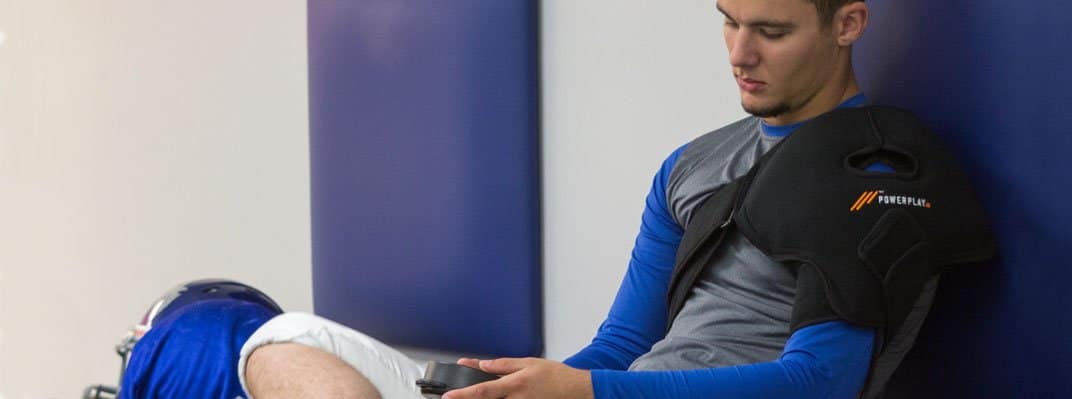
MOST COMMON SPORTS INJURIES FOR FALL SPORTS
We at PowerPlay appreciate Athletic Trainers and realize that the position is often the unsung hero of athletics. Thank you to everyone who participated in our survey. Happy Athletic Training Month everyone!
